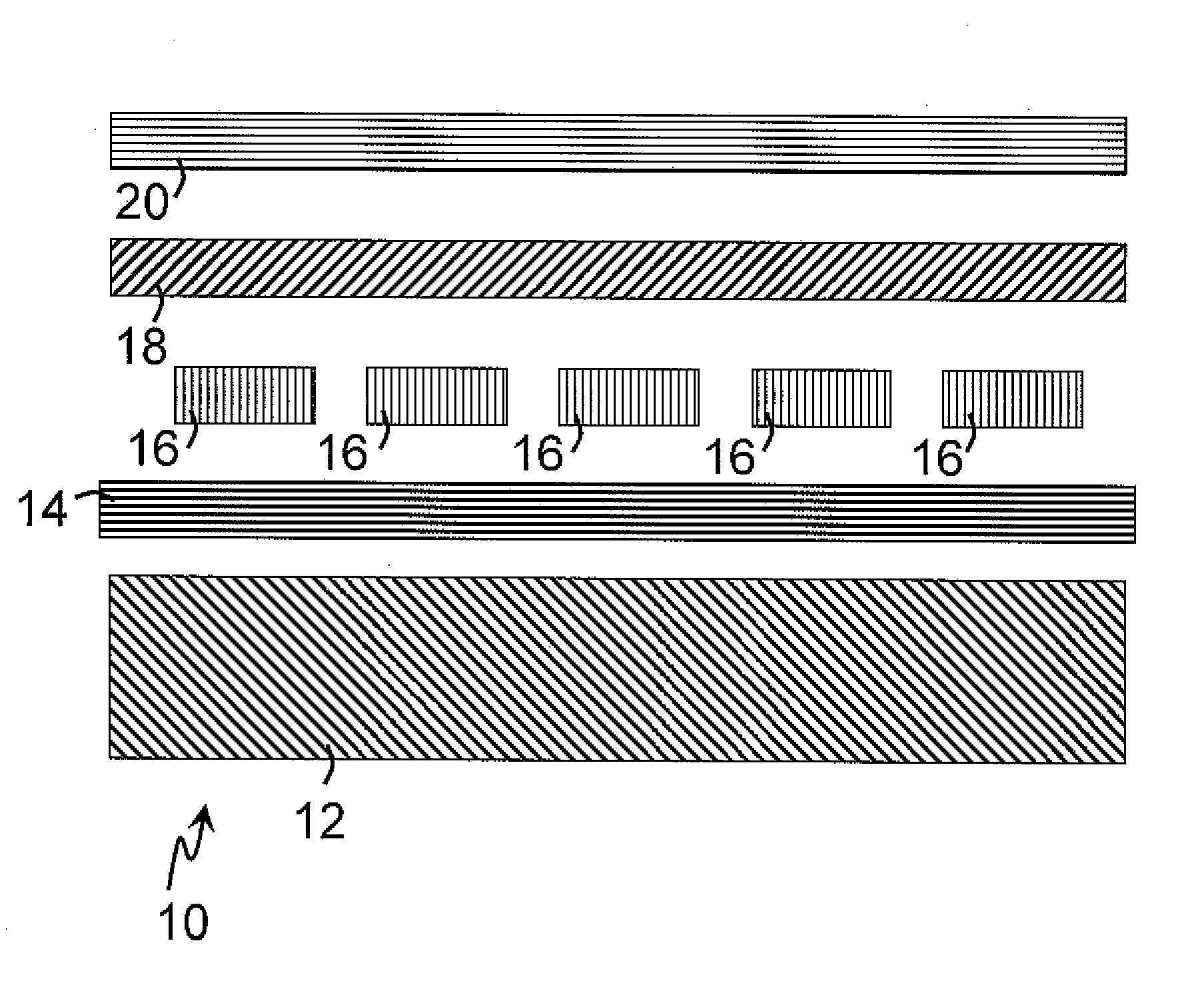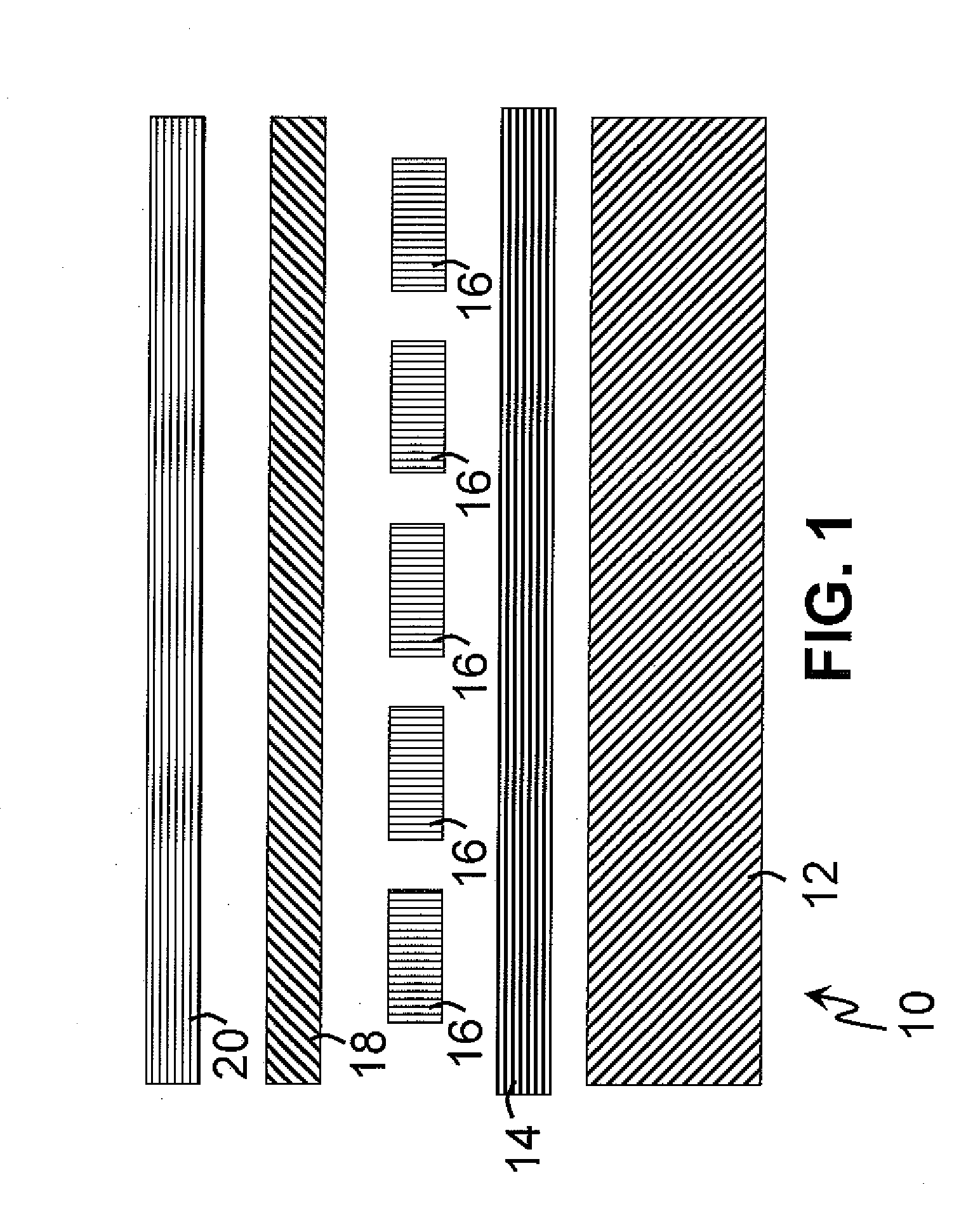Thermal Conducting Materials for Solar Panel Components
a technology of solar panel components and conducting materials, which is applied in the direction of packaging, domestic applications, synthetic resin layered products, etc., can solve the problems of significant reduction of electrical power output, and achieve the effects of improving efficiency, increasing power output, and high thermal conductivity
- Summary
- Abstract
- Description
- Claims
- Application Information
AI Technical Summary
Benefits of technology
Problems solved by technology
Method used
Image
Examples
example 1
[0147]A laminated panel was prepared according to comparative Example 1 above except the back side encapsulant was replaced with an ethylene vinyl acetate filled with 15 weight percent silicon carbide having an average particle size of 9 micrometers. The silicon carbide had a CIE L* value of 46.5 according to CIE 1976 (L*, a*, b*) color space. The silicon carbide had a polydispersity (PD) of 0.5. The encapsulant did not include glass scrim. The silicon carbide containing panel was outfitted with a thermocouple and mounted to the backing board as above. The data acquisition and data logging apparatus was configured to record the temperature and voltage of the panel with the silicon carbide filled encapsulant.
[0148]The time of day versus differences (reference minus filled EVA) of the temperatures measured by the respective thermocouples are shown in FIGS. 4-6. FIG. 4 shows the temperature difference being relatively small (less than about 1 degree Celsius) during the early morning an...
example 2
[0151]A second laminated panel was prepared according to comparative Example 1 above except the back side encapsulant was replaced with an ethylene vinyl acetate filled with 15 weight percent talc having a mean particle size of 1.5 micrometers. The talc had a CIE L* value of 77 according to CIE 1976 (L*, a*, b*) color space. The talc had a polydispersity (PD) of 2.3. The encapsulant did not include glass scrim. The talc containing panel was outfitted with a thermocouple and mounted to the backing board as above. The data acquisition and data logging apparatus was configured to record the temperature and voltage of the panel with the talc filled encapsulant.
[0152]FIG. 7 shows data on a still different day with the reference and the talc filled encapsulant panel. The temperature difference peaked earlier in the afternoon and continued to decline with changes in overhead sun. The difference in power averaged over 3 percent. The power difference may be overstated due at least in part to...
example 3
[0153]Thermal calculations based on solar modules with the infrared extinguisher were made. The base case calculations without the extinguisher showed a solar cell operated at 59 degrees Celsius with absorption of the infrared light. The calculations showed that extinguishing 20 percent of the infrared light resulted in a solar module that operated at 57 degrees Celsius or 2 degrees Celsius cooler. The calculations showed that extinguishing 50 percent of the infrared light resulted in a solar module that operated at 55 degrees Celsius or 4 degrees Celsius cooler.
[0154]As used herein the terms “has”, “having”, “comprising”“with”, “containing”, and “including” are open and inclusive expressions. Alternately, the term “consisting” is a closed and exclusive expression. Should any ambiguity exist in construing any term in the claims or the specification, the intent of the drafter is toward open and inclusive expressions.
[0155]As used herein the term “and / or the like” provides support for...
PUM
| Property | Measurement | Unit |
|---|---|---|
| Temperature | aaaaa | aaaaa |
| Fraction | aaaaa | aaaaa |
| Fraction | aaaaa | aaaaa |
Abstract
Description
Claims
Application Information
 Login to View More
Login to View More - R&D
- Intellectual Property
- Life Sciences
- Materials
- Tech Scout
- Unparalleled Data Quality
- Higher Quality Content
- 60% Fewer Hallucinations
Browse by: Latest US Patents, China's latest patents, Technical Efficacy Thesaurus, Application Domain, Technology Topic, Popular Technical Reports.
© 2025 PatSnap. All rights reserved.Legal|Privacy policy|Modern Slavery Act Transparency Statement|Sitemap|About US| Contact US: help@patsnap.com



